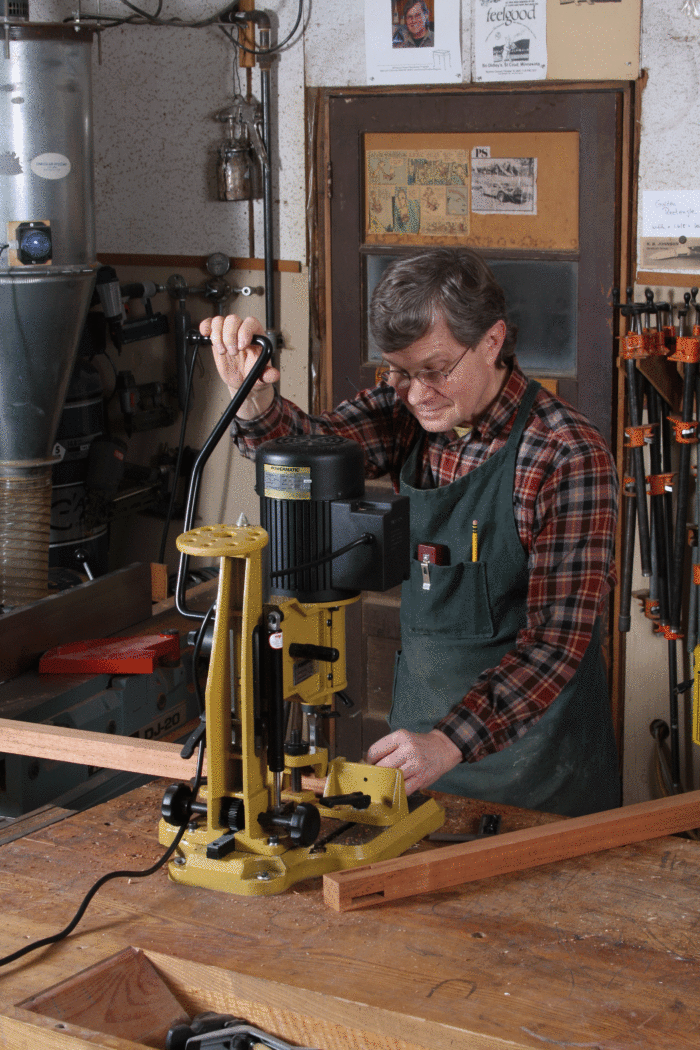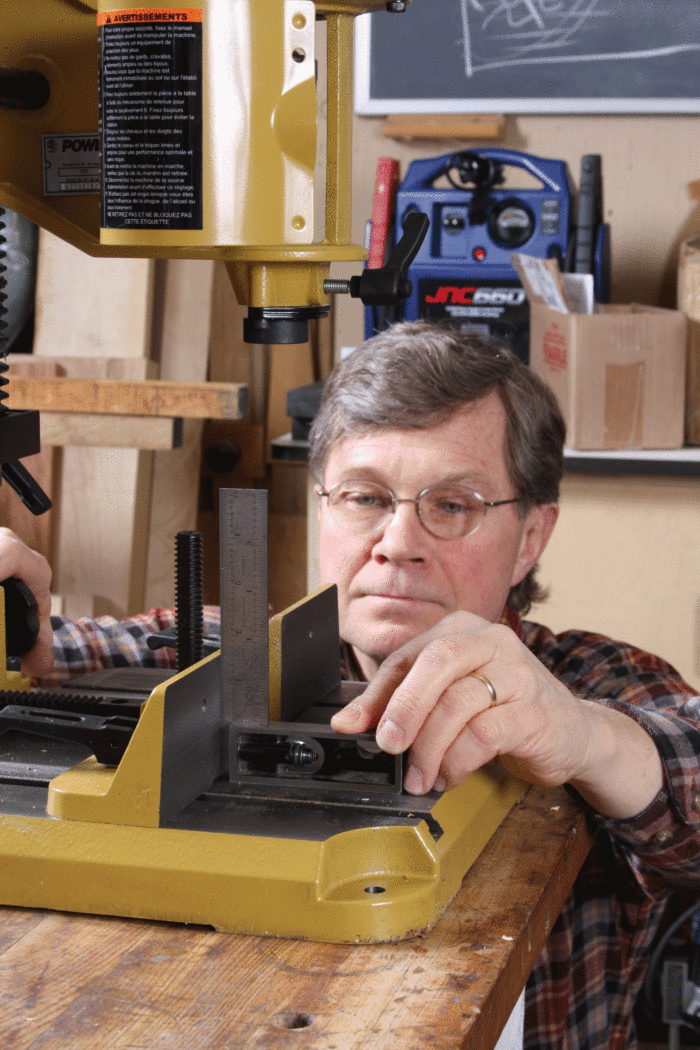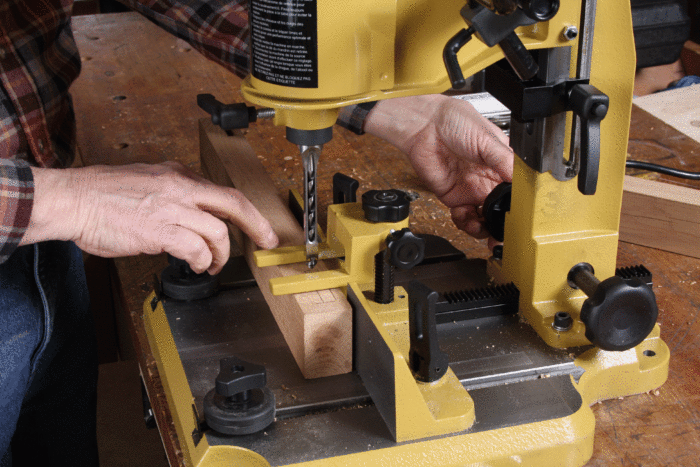What to Look for in a Benchtop Mortiser
These fast, accurate drilling machines cut square holes easily. Know what to look for when you're ready to buy.

Synopsis: The hollow-chisel mortiser cuts square holes quickly and accurately. The machine’s head is fitted with a square, hollow chisel with a drill bit running through the center. As you plunge the chisel and bit into the wood, the bit removes most of the waste, and the chisel squares up the hole. Benchtop mortisers have enough power to plunge a chisel up to 1⁄2 in. square into hardwoods, and they cost significantly less than larger, floor-standing machines. Roland Johnson provides an overview of what to look for in these machines.
The mortise-and-tenon might not be the most glamorous furniture joint (there is no denying the dovetail’s beauty), but it’s strong, reliable, and versatile, suitable for tables, chairs, casework, and more. Many woodworkers, however, find the mortise half of the joint to be a challenge. To cut it by hand you need only a chisel and mallet, but it takes time to learn the technique. Drilling or routing out the waste and then squaring up the walls with a chisel also works, but it, too, is time-consuming.
A better tool for the job is the hollow-chisel mortiser, which cuts square holes quickly and accurately. The machine’s head is fitted with a square, hollow chisel with a drill bit running through the center. As you plunge the chisel and bit into the wood, the bit removes most of the waste, and the chisel squares up the hole.
Although mortisers come in a variety of sizes, a benchtop model will cut just about every mortise you’d need for furniture. Benchtop mortisers have enough power to plunge a chisel up to 1⁄2 in. square into hardwoods, and they cost significantly less than larger, floor-standing machines. Plus, they are light and small enough to store out of the way when not in use.
Power, leverage, and ease of use
It’s not easy to plunge a chisel and drill bit simultaneously into wood, so a mortiser needs a strong motor, and a handle that creates leverage. With models that have less than 3⁄4 hp, you’ll need to slow the feed rate in harder woods to keep the chisel and bit from clogging. However, most furniture mortises are between 1⁄4 in. and 3⁄8 in. wide, and most of the machines on the market easily cut mortises in that range. For leverage, you want a longer handle, and it’s better if it is easy to adjust. Most important is how easy the mortiser is to use. Adjustments to the fence shouldn’t require a tool. The depth stop should be simple and quick to operate without tools. And the drill chuck should be easily accessible.
Square fence that is easy to use
Every time you set up to cut a mortise, you have to adjust the fence, so that task should be easy every time. Also, the fence must be square to the table to ensure accuracy. A convenient system to hold the work down on the table and against the fence is worth having, too.
 |
 |
 |
 |
Convenience is king for bit changes
The chucks on these machines are typically located behind a door, so it should be a snap to open. And there should be plenty of space to get the chuck key in.
 Wide open for business. An access door that is big and wide open makes it very easy to lock and loosen bits in the chuck.
Wide open for business. An access door that is big and wide open makes it very easy to lock and loosen bits in the chuck.
Depth stop must be dead-on
A stop will prevent you from accidentally cutting a through-mortise. But more importantly, it guarantees that every cut is the same depth.

Bigger tables are better
A big table stabilizes the workpiece, so you can use both hands to adjust the mortiser’s settings, reducing the chance that the part will move during the cut.

Hold-downs make work easier
When raised out of the cut, the chisel and bit can pull the part up off the table. A good hold-down prevents that.

Fine Woodworking Recommended Products

Shop Fox W1826

Rikon 10-3061 10-in. Deluxe Bandsaw
The saw has two speeds: 3,280 sfpm (surface feet per minute) for wood and 1,515 sfpm for soft metals and some plastics.

Ridgid R4331 Planer








Log in or create an account to post a comment.
Sign up Log in